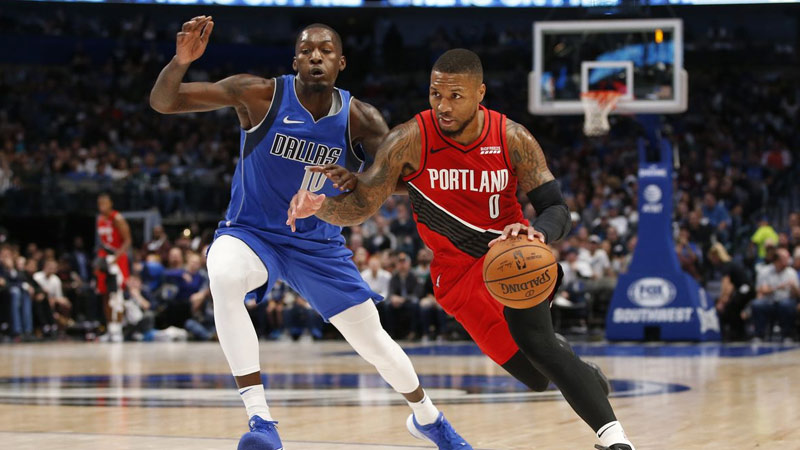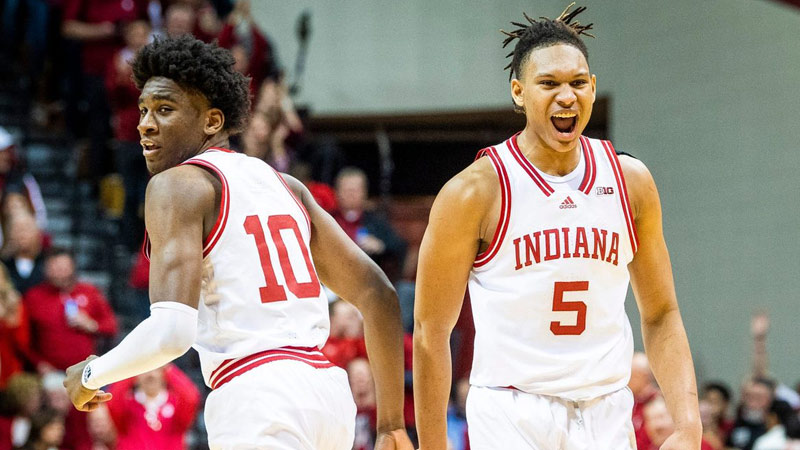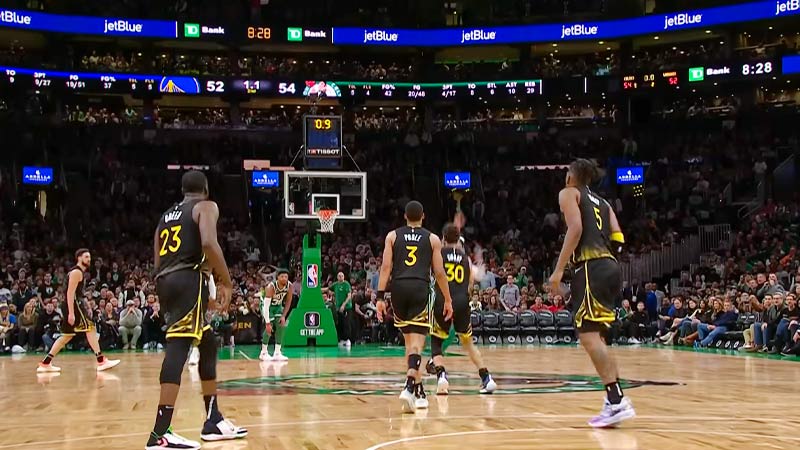If you are a basketball fan, you might have heard the term “spacing” used by coaches, players, or commentators. But what does it mean, and why is it important for the game?
In this blog post, we will explain the basic concepts of spacing in basketball, and how it can help the offense create scoring opportunities and challenge the defense.
So, whether you are a basketball player or a fan, you should continue reading this article till the end. Besides, check the other facts as well, to learn the facts in-depth. Stay focused.
What Is Spacing in Basketball?
Spacing in basketball is a fundamental concept that refers to how far away the offensive players are from each other on the court.
Spacing is important because it allows the offense to execute various skills such as passing, cutting, screening, dribbling, and shooting more effectively and productively. Spacing also makes it harder for the defense to prevent or limit these skills.
Here, we will explain what spacing is, how it is applied in the NBA, how to create spacing, what are the challenges in creating spacing, and some frequently asked questions about spacing.
Spacing in NBA
Spacing is a crucial aspect of NBA basketball, as it determines how well the offense can operate against the defense. NBA teams use different strategies and tactics to create and maintain good spacing on the floor, such as:
- Using three-point shooters to stretch the defense and open up driving lanes for ball handlers.
- Using pick-and-roll or pick-and-pop plays to create mismatches and force the defense to rotate or switch.
- Using off-ball movement such as cuts, screens, and relocates to confuse the defense and generate open shots.
- Using ball movement and player movement to keep the defense on their toes and prevent them from sagging or packing the paint.
Some examples of NBA teams for their excellent spacing are:
- The Golden State Warriors, use their elite shooters such as Stephen Curry, Klay Thompson, and Kevin Durant (when he was on the team) to spread the floor and create havoc for the defense with their constant motion and ball movement.
- The Milwaukee Bucks, use their superstar Giannis Antetokounmpo as a primary ball handler and surround him with shooters such as Khris Middleton, Jrue Holiday, and Brook Lopez to give him space to attack the rim or kick out to open teammates.
- The Utah Jazz, who use their versatile big man Rudy Gobert as a screen setter and rim runner and pair him with shooters such as Donovan Mitchell, Mike Conley, Bojan Bogdanovic, and Joe Ingles to create a balanced offense that can score from inside and outside.
How to Create Spacing in Basketball?

Source: thespax.com
Creating spacing in basketball requires both individual and team skills. Here are some tips on how to create spacing in basketball:
Know Your Role and Position on the Court
Depending on your role and position, you should fill different areas of the court that indicate good spacing.
These areas are the top, the slots, the wings, the corners, the high posts, and the low posts. You should only occupy one area at a time and avoid crowding or overlapping with your teammates.
Know Your Range and Shot Selection
Depending on your shooting ability and confidence, you should take shots that you can make consistently and avoid taking shots that are too difficult or contested.
You should also know when to shoot and when to pass. Shooting when you are open or have an advantage can help create spacing by forcing the defense to respect your shot.
Passing when you are covered or have a disadvantage can help create spacing by moving the ball to a better option.
Know How to Move Without the Ball
Depending on the situation and the play call, you should move without the ball to create spacing by using various techniques such as:
Cutting
Making a quick move towards or away from the basket to get open for a pass or a shot.
Screening
Setting a physical or legal contact on a defender to free up yourself or a teammate for a pass or a shot.
Relocating
Moving to a different spot on the court after passing or shooting to maintain good spacing or get ready for another opportunity.
Off-Ball Movement in Spacing

Source: crimsonquarry.com
Off-ball movement is one of the most important skills for creating spacing in basketball.
Off-ball movement refers to how you move when you don’t have the ball in your hands. Off-ball movement can help create spacing by:
- Generating open shots for yourself or your teammates by losing your defender or creating confusion for the defense.
- Creating driving lanes for yourself or your teammates by drawing your defender away from the basket or creating mismatches for the offense.
- Creating passing lanes for yourself or your teammates by getting into a better position or angle to receive or deliver a pass.
Some Examples of Off-Ball Movement Techniques
Here, some examples of off-ball movement techniques are discussed in the following section.
Back cut
Making a quick move toward the basket from behind your defender when they are overplaying you or looking away from you.
Curl cut
Making a curved move around a screen toward the basket when your defender is trailing you or going under the screen.
Flare cut
Making an outward move away from a screen toward the perimeter when your defender is going over the screen or hedging hard.
Slip screen
Making an early cut toward the basket before setting a screen when your defender is anticipating the screen or switching early.
Pin down screen
Setting a screen for a teammate who is near the baseline or the corner to free them up for a shot or a pass.
Back screen
Setting a screen for a teammate who is near the top of the slot to free them up for a cut or a pass.
What Are the Challenges in Creating Spacing in Basketball?
Creating spacing in basketball is not always easy, as there are many challenges and obstacles that can prevent or disrupt good spacing. Some of these challenges are:
Defensive pressure
The defense can apply pressure on the ball handler or the passer to make it harder for them to see the floor or make accurate passes.
The defense can also deny or contest passes to the receivers to make it harder for them to catch the ball or shoot the ball.
Defensive schemes
The defense can use different schemes or strategies to limit or prevent good spacing, such as:
Zone defense
The defense can use a zone defense to cover specific areas of the court rather than specific players, making it harder for the offense to find gaps or seams in the zone.
Help defense
The defense can use help defense to provide support or assistance to their teammates who are guarding the ball handler or the cutter, making it harder for the offense to score or pass.
Double team
The defense can use a double team to trap or surround the ball handler or the passer with two defenders, making it harder for them to dribble or pass out of the double team.
Offensive mistakes
The offense can make mistakes that can ruin or reduce good spacing, such as:
Bad timing
The offense can have bad timing in their movement or execution, making it easier for the defense to anticipate or react to their actions.
Bad spacing
The offense can have bad spacing in their positioning or alignment, making it easier for the defense to guard them or help each other.
Bad decision making
The offense can have bad decision-making in their shot selection or passing, making it easier for the defense to contest their shots or intercept their passes.
FAQs
How far apart should players be in good spacing?
Players should be at least 12 to 15 feet apart from each other in good spacing, depending on their role and position on the court.
How many players should be inside and outside the three-point line in good spacing?
There is no definitive answer to this question, as different teams and coaches may have different preferences and philosophies.
However, a common rule of thumb is to have at least three players outside and two players inside the three-point line in good spacing, as this can create a balance between inside and outside scoring threats.
How can players improve their spacing skills?
Players can improve their spacing skills by practicing various drills and exercises that focus on spacing, such as 3-on-3 half court, 4-out 1-in motion offense, and 5-on-5 scrimmage.
Why is spacing important in basketball?
Spacing is important because it creates room for players to operate and makes it harder for the defense to guard them.
When players are spaced well, they can cut, drive, screen, and shoot more effectively, and they can also see the floor better and make better decisions.
Spacing also prevents the defense from collapsing on the ball handler or the post player and forces them to cover more ground and communicate more.
What are some examples of players who are good at creating spacing?
Some examples of players who are good at creating spacing are Stephen Curry, LeBron James, and Rudy Gobert.
Wrapping Up
So, spacing is a very important concept in basketball that is often overlooked at the youth level. Spacing means that teammates need to be 12 feet (on average) in a half-court set.
This applies when the offense is settled, and not in a fast break. Spacing helps the offense create scoring opportunities and challenges the defense by making use of the entire court and creating movement and passing lanes.
Spacing also prevents the offense from being crowded and pressured by the defense, which can lead to turnovers and missed shots.
Spacing is a skill that can be improved by practicing and understanding the different areas of the court and how to fill them effectively.
By mastering spacing, basketball players can elevate their game and become more efficient and productive on the offensive end. Best wishes.







